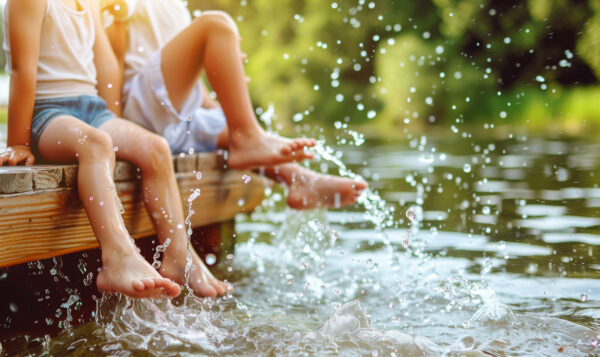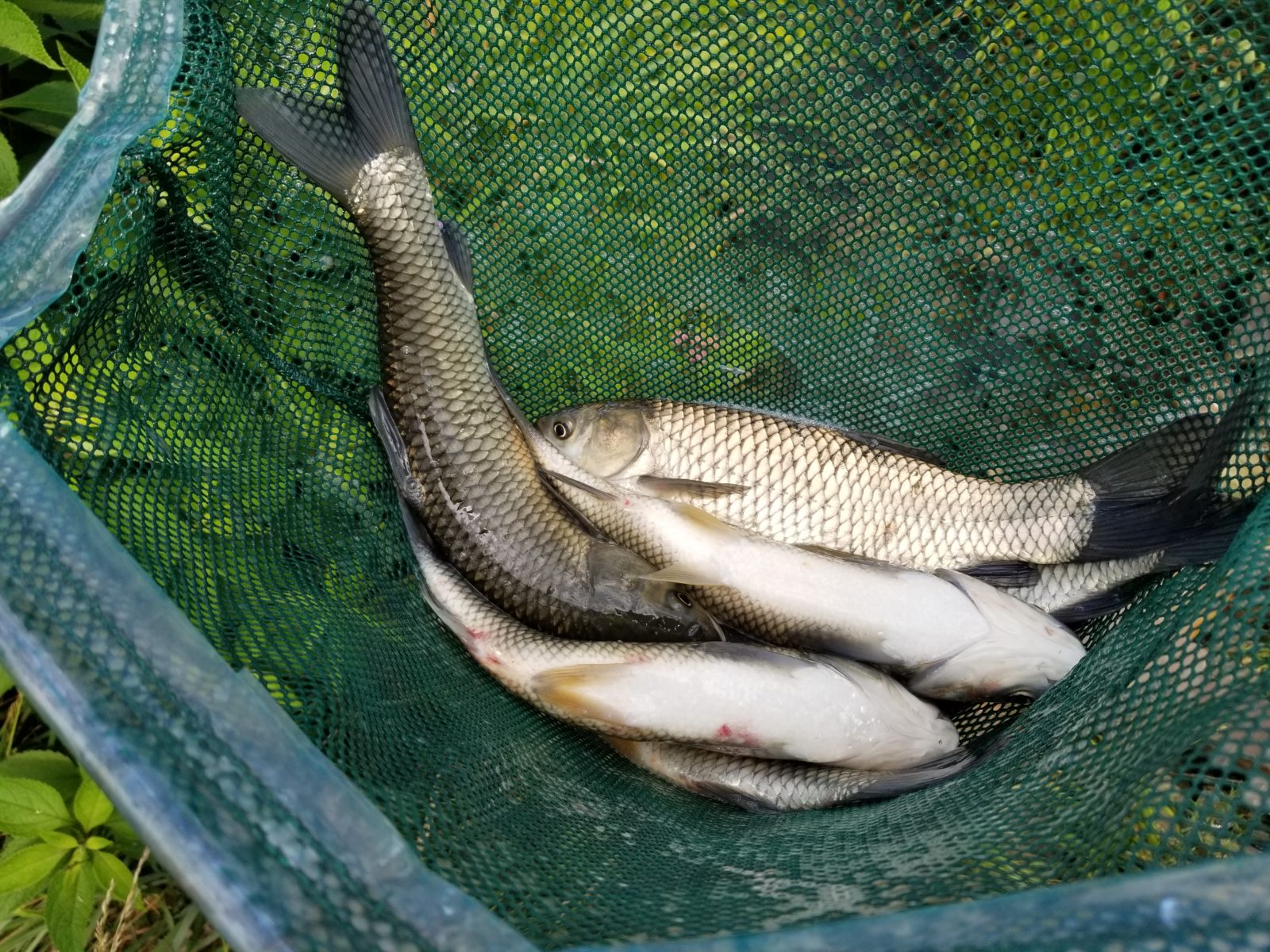
Vegetation Control Using Triploid Grass Carp in Ponds
AS SEEN IN Pond Boss, November/December 2014, Written by Industry Expert David Beasley, Lead Fisheries Biologist
Triploid grass carp are unique, olive-green, cigar-shaped fish often observed basking in the sunshine in shallow water as they soak up warm surface temperatures. What sets these fish apart from others is their intense appetite for a wide variety of underwater plant life. If stocked at high enough density, these guys will eat plants faster than the greenery can grow. Many pond owners have witnessed grass carp work wonders, taking choked-out ponds and cleaning them up, restoring beautiful waterways. Other times people experience little to no vegetative control. With grass carp it is often a great success story or complete failure.
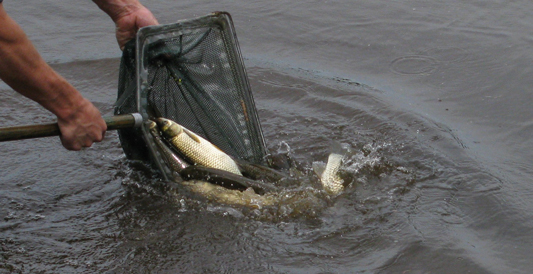
So, how do you stock grass carp with confidence you’ll obtain the desired results?
Prior to stocking sterile triploid grass carp and fine-tuning your strategy, understand the pros and cons of them as a management tool. There is a risk/reward ratio that can be favorable with a clear understanding of tendencies and capabilities. In addition to the good and bad associated with stocking them, also understand why they sometimes work, but not at other times. It is almost always human error when grass carp aren’t effective.
That means John Q. Pondmeister needs to know what types of plants these fish eat, what they don’t, and then stock the right size fish at the proper rates. Rather than shooting from the hip with management strategy, understand how to use them properly.
Triploid grass carp are considered a natural method for controlling aquatic vegetation and macro-algae. They can live for many years (20 plus years in some cases). Their ability to live long typically makes them significantly more cost-effective than herbicides. Who’s opposed to saving dollars, long term? They are normally readily available year-round in several sizes and are legal to stock in many states (a permit is typically required in states where they are legal). If stocked at a proper rate, at correct sizes, targeting proper plant species, and the right time, expect to achieve close to 75-100% vegetation control the first year, depending on the severity of the problem.
Grass carp feeding habits are fairly selective. They prefer softer, pliable aquatic vegetation. This desire for delicate vegetation reduces tendencies to eat most emergent and floating aquatic vegetation species. Although they have been reported to eat such greenery, it seems to be a low occurring anomaly if dealing with a stocking rate <15 fish per acre. Grass carp’s selective diet is significant to pond owners since it allows floating plants such as watermeal, and emergent species as pickerelweed, lilies and duck potato, to coexist with the fish. The reason this is so important is because it allows these floating and emergent species to both serve as refuge for fish and wildlife, while also helping to manage influxes of nutrients that occur over the growing season. Depending on your goals and the uses of the pond, it can be important that grass carp not eradicate some floating and emergent vegetation species.
The downsides? If stocked at a high enough density early in the year before plants germinate, grass carp will consume all vegetation within their selective diet. This can be a negative because bare ponds leave young of the year (YOY) and juvenile fish with little refuge. As a result, eradicating vegetation can cause a balanced fishery to quickly turn upside down, especially systems that are not very nutritionally productive via plankton.
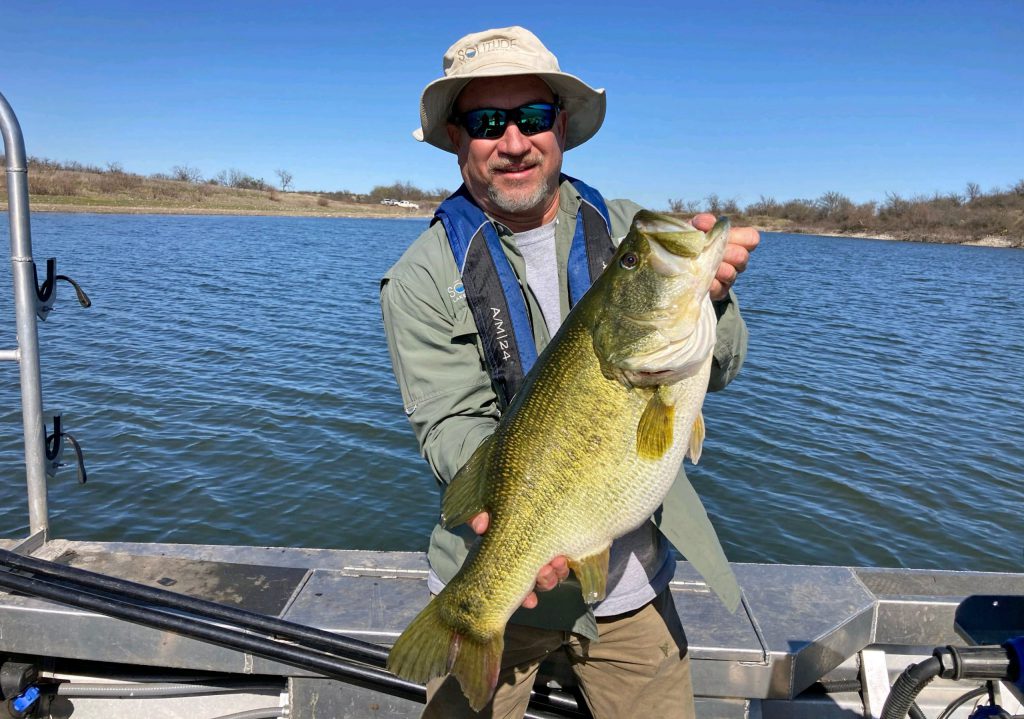
If growing big largemouth bass is an important goal consider adding dense cover for small fish prior to eradicating undesired vegetation. This can be done by planting beneficial emergent vegetation, such as pickerelweed and duck potato in shallow water and by adding a bunch of dense manmade or natural materials to water less than five feet deep.
Another drawback for those managing fishing ponds is grass carp can get lazy and park themselves in front of your fish feeders, especially if there is no vegetation left in the pond. If you use fish feeders as a primary way to increase productivity, then understand grass carp will likely compete for fish feed at some point, typically as they get a few years under their scales. If they are observed eating fish feed you should harvest them. The most common method of removing grass carp is to shoot them or fish them out. By the way, that’s easier said than done.
An additional drawback is that grass carp are a riverine fish and have the tendency to want to travel. They seem to gravitate to the sound of moving water, so depending on the pond; they may be difficult to keep from escaping downstream. To fix this issue plan to make an adjustment to the water bodies outflow so carp cannot escape. In fact, many states require that outflow of the pond be modified so fish do not escape.
While this fish may seem to be a magic bullet, be sure to think beyond the obvious. Once you determine grass carp will target your invasive plants, think what happens next.
For example, one scenario to consider is a pond with elevated nutrient load and also choked with submersed aquatic vegetation, such as hydrilla or milfoil. In these situations, stocking grass carp at a high rate such as 10-15 fish per acre will often eradicate the vegetation and leave even higher nutrient loads, making the pond prone to dense algae blooms. If this is the case, you may need to consider applying algaecides to control the undesired algae and also implement management strategies that help to lower the nutrient level. Ponds in areas with runoff can minimize this risk through flushing with fresher water.
Prior to stocking grass carp you should first be able to answer the following questions properly: Are they legal in your state? Do you have sufficient cover to help your predator-to-prey ratio stay in balance once your submersed vegetation is eradicated? Is your undesired vegetation a species that grass carp will eat? If you are using fish feeders and grass carp start eating the fish feed, will you take the necessary action to remove the grass carp? Or, will you change your feeding strategy? Do you plan to install beneficial emergent vegetation in the future? Answers to these questions set the stage for wise decisions.
One important factor when stocking grass carp is to stock the correct size. Far too often I see and hear of people stocking 8-inch fish. An 8-inch grass carp is a snack to most adult bass and catfish. To improve odds of success it is important to stock grass carp that are a minimum of 10 inches in length, but preferably 12 inches. These larger fish are hardier and can avoid predation more easily. Additionally, they have the ability to eat more aggressively and reach larger sizes more quickly, which will help reduce predation while also reducing their ability to escape through the outflow. If you have a bunch of bass 5-10+ pounds, you should ask your fish supplier for 2-pound grass carp. A 14-inch grass carp is about 2 pounds and will be better suited to avoid predation from larger bass.
If larger grass carp are not available, consider increasing stocking rate of 10-inch fish.
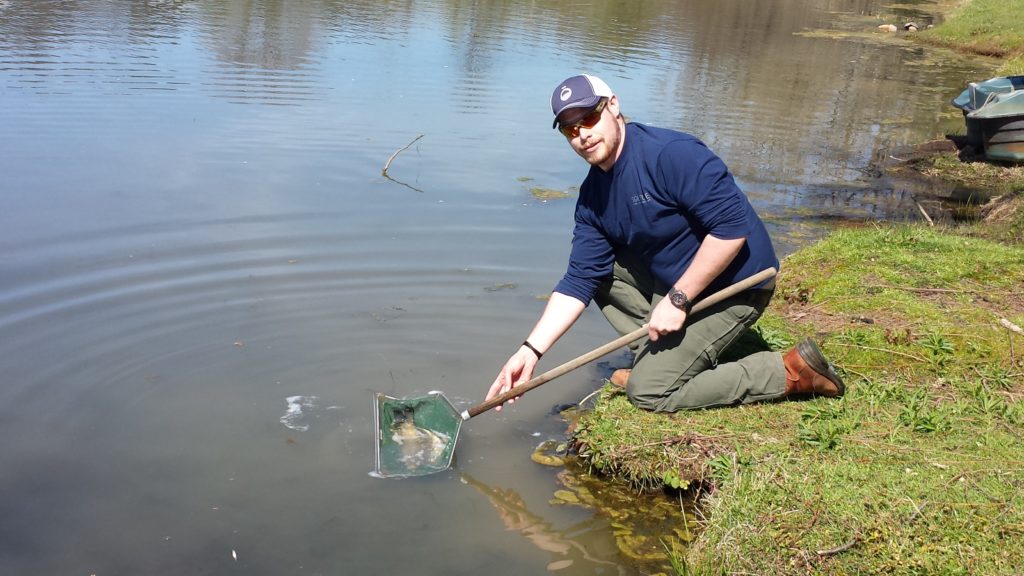
The key to knowing when to stock grass carp depends on how easy the carp can escape the pond as well as the timing of fresh, succulent growth of your plants. If the outflow is set up so grass carp cannot fit through the openings, then you can get away with stocking them nearly any time of year. If the pond has the tendency to go over the emergency spillway regularly, or it is difficult to limit escapement through the outflow, then it will become much more important to stock in the spring right before the plants germinate. Additionally, scientific literature estimates the mortality rate on grass carp at approximately 20 to 30 percent the first couple years after you stock them. So, if you are stocking carp in the fall, keep in mind that your rate will need to be slightly higher since the grass carp population will likely diminish some prior to plants germinating in the spring.
When it comes to stocking rates, you can take two approaches. The first is to stock a low-moderate rate of grass carp to help reduce some vegetation, but not likely eradicate it. Stocking ~4-7 fish per vegetated acre is a good rate to meet this goal. The reality is that this low-moderate stocking rate does not seem to work very quickly, especially when dealing with invasive species. In many cases of low stocking rates the vegetation tends to maintain its dominant status for 18 months or longer. This is likely the reason why many people experience failures with grass carp, they simply do not have enough fish present to do the job.
The second approach and, in my experience, the most successful strategy for controlling nuisance or invasive submersed vegetation is to stock what it will take to eradicate the plants. Stocking 10-15 grass carp per actual acre of vegetation typically works well. If vegetation is sporadic and not very dense, you can likely get away with only 10 fish per acre. With this approach it is critical that you provide an alternative source of dense cover for small fish to help the fishery maintain balance during this transition. Dense shoreline cover is vital to the fishery’s success and should not be overlooked or taken lightly.
If stocked at the correct size, time of year and at a high enough rate to eradicate the vegetation you will likely find that you do not need to restock annually. Although, after a few years, grass carp will die off annually. Add the fact that the aquatic vegetation they consume will not go to seed and as a result the percent coverage of vegetation will often diminish at a rate faster than the carp typically die.
If you still have major vegetation issues by mid-summer following the carp’s first spring in the pond then you likely have too low a carp population to achieve control. When it comes to restocking grass carp, you should stock based on the needs of the pond rather than restocking a set percentage annually. As identified above, the amount of vegetation going to seed is going to diminish annually if you initially stock enough carp, so a better restocking method is to stock based on the actual vegetation growth. If you observe vegetation growing, simply estimate the acreage of vegetation and stock additional carp. One exception to this would be if you are fertilizing your pond. In this situation you will have an accelerated level of vegetation growth and will need to be more proactive with your stocking rates and may need to restock grass carp more frequently to sustain a large enough population.

